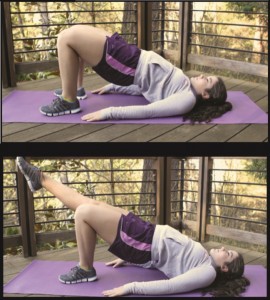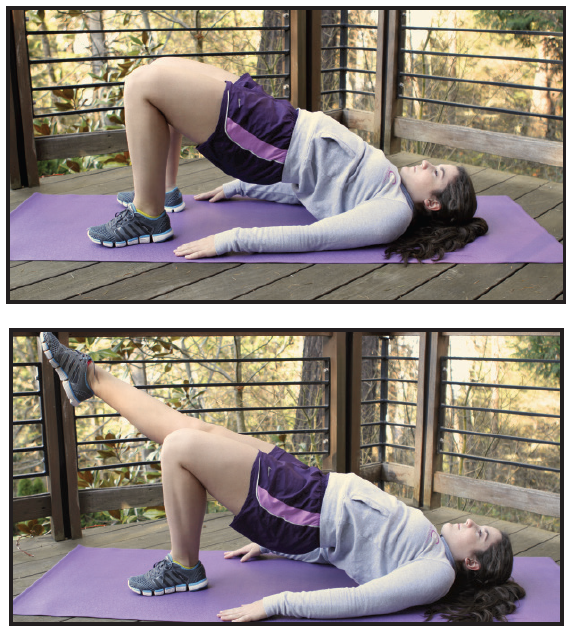By Damon Leedale-Brown, Sports Scientist & Conditioning Specialist
Following on from last month’s issue let us look at a series of strength exercises that would provide a good starting point for any young squash player’s first introduction to strength training. I have chosen exercises that help develop a strong foundation in technique, and en- courage the development of both mobility and stability alongside strength.
1. Hands-Free Body-Weight Squat:
• Start with arms extended in front of body and hands at shoulder height.
• Focus on keeping the chest open and shoulders drawn back.
• Position feet shoulder width apart with toes slightly turned out.
• Descend into the squat and think about sitting back into the hips with weight through the heels.
• Descend until tops of thighs are parallel to the floor, and check that the knees stay over the toes and do not collapse inwards or spread outward.
• On the ascent focus on driving up with the chest as you drive the heels into the floor, moving the hips up and forward.
2. Split Squat:
Personally I like to start with the over-head split squat as I find this helps encourage better posture and form in the exercise.
• Step into a deep lunge position
• Hold arms above head with palms facing forward (or holding a light stick or medicine ball).
• Drop the back knee down to- wards the floor while the front knee remains over the ankle
• Keep head up and chest open, and shoulders sitting directly above the hips.
• As you lower into the split squat you should feel a sight stretch through the hip-flexors of the rear leg.
• Focus on driving from the hips as you return to the starting position.
3. Lateral Squat:
A great exercise to promote dynamic flexibility of the adductors (inner thigh).
• Stand with feet approximately four feet apart and toes facing forward (better to go wider than narrower as this can be very difficult with taller athletes if the base is too narrow).
• Shift weight to one side; sit into the hip.
• Keep weight on the heel as you sit down and knee running over the toe.
• Other leg should remain straight as you sit into the opposite hip, and both feet should remain flat on the floor and facing forwards.
 4. Supine Bridge (with leg-lift progression):
4. Supine Bridge (with leg-lift progression):
A great exercise to develop glutes and hamstring strength in hip extension movements.
• Lie on back with feet flat on floor and hands down by side.
• Use the glutes and hamstrings to raise the hips off the floor until there is a straight line from the knee through to the hips and shoulders.
• Typically errors in this exercise are the hips not raised high enough from the floor which significantly reduces its effectiveness.
• Once the hips are raised maintain this position for up to 30 seconds.
• Progress with single leg lifts and build up to 15 second holds on each side.
5. Four point kneeling leg lifts with dowel:
• Start in a four point kneeling position with a dowel/light pole placed across the hips.
• Extend one leg without any movement of the dowel.
• Hold for 5 seconds and then switch sides.
This exercise sounds easy but is actually hard to perform well!
Putting it all together
Using the five exercises above create a circuit program including some footwork/agility exercises:
Squat: 15 reps
Four-point kneeling and leg lift: 5 reps, 5 second holds each side
Ladder or cone agility drill: 30 seconds
Lateral Squat: 10 reps each side
Jump Rope: 45 seconds
Split Squat: 10 reps each position
Bridge: 2 reps, 15-second hold; or 3 reps, 10 second hold each side on single leg
Ladder or cone agility drill: 30 seconds
Repeat circuit 2-3 times with only rest period the time to move between each exercise. Take your time on the strength exercises with attention always paid to excellent form.
I hope this series of articles has given you a good overview of the importance of strength training with young athletes, helped answer any concerns you had, and given you a good idea of how to get started!





